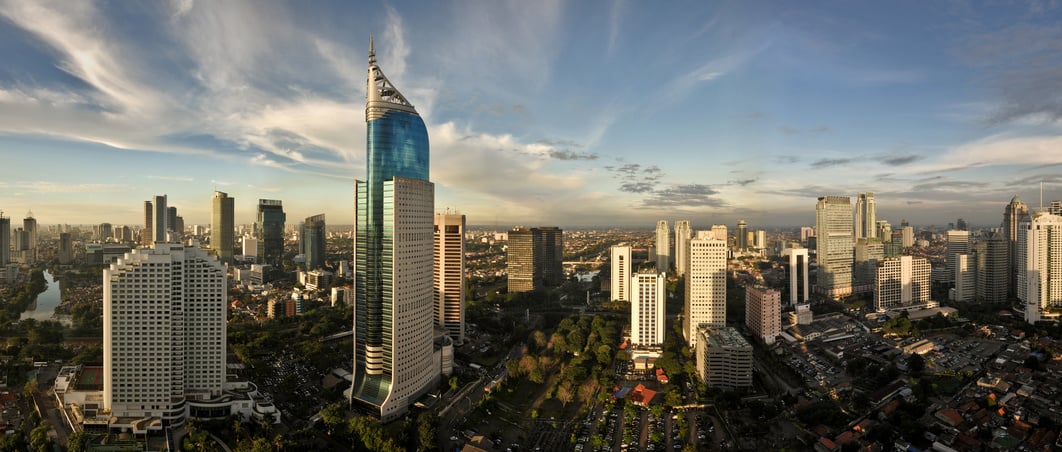The Primer on Fintech in the Philippines covers legal and regulatory issues and considerations related to the financial technology sector in the Philippines, including data privacy and cybersecurity considerations, anti-money laundering compliance, and the business challenges that the sector may face.
On 19 July 2024, pursuant to the National Payment Systems Act, the Bangko Sentral ng Pilipinas (BSP; Philippine Central Bank) issued Circular No. 1198, Series of 2024 on the Regulatory Framework for Merchant Payment Acceptance Activities (MPAA). The regulatory framework aims to establish standards and best practices to safeguard customer funds and protect merchants’ rights when dealing with operators of payment systems (OPS) engaged in MPAA.
BSP Circular No. 1198 took effect on 8 August 2024, 15 days after the circular’s publication in a newspaper of general circulation.
On 26 July 2024, the Monetary Authority of Singapore (MAS) updated the Guidelines on Licensing for Payment Service Providers (PS-G01), which became effective on 26 August 2024. These changes are applicable to current and future Standard Payment Institutions (SPIs) and Major Payment Institutions under the Payment Services Act (PSA).
The updates can be divided into those that relate to (i) the application process for a new MPI or SPI license or a variation of an existing license under the PSA; and (ii) those that relate to ongoing business conduct.
On 26 July 2024, the Monetary Authority of Singapore (MAS) updated the Guidelines on Licensing for Payment Service Providers (PS-G01), which became effective on 26 August 2024. These changes are applicable to current and future Standard Payment Institutions (SPIs) and Major Payment Institutions under the Payment Services Act (PSA).
The updates can be divided into those that relate to (i) the application process for a new MPI or SPI license or a variation of an existing license under the PSA; and (ii) those that relate to ongoing business conduct.
On 29 August 2024, the Central Bank of the Republic of Argentina (BCRA, after its Spanish abbreviation) issued Communication “A” 8099, which sets forth the implementation of the foreign exchange benefits provided by the Incentives Regime for Major Investments (RIGI, after its Spanish abbreviation).
AAOIFI released a Sukuk exposure draft in early November 2023 in response to a rapid increase in the use of Sukuk and the development of the market in the past decade. A key change in the draft standard is that it requires an actual transfer of ownership to occur under an Ijara Sukuk investment. It is unclear what the appetite will be for asset-backed Ijara Sukuk if the standards are tightened and whether, at this stage, the standard will pass.
On 26 July 2024, the government of Indonesia issued Government Regulation No. 28 of 2024 (“GR 28”), which is an implementing regulation of Law No. 17 of 2023 on Health (“Health Omnibus Law”). GR 28 came into effect on the same day it was issued.
Through GR 28, the government aims to impose control by setting up limits on the maximum content level of sugar, salt and fat (known as gula, garam dan lemak/”GGL”) in processed food products.
Recently, the Egyptian Financial Regulatory Authority has introduced a series of groundbreaking regulations to create a robust framework for the accreditation, issuance, listing, delisting, and trading of carbon emissions reduction certificates. On 13 August 2024, the FRA officially launched the first regulated voluntary carbon market. These steps underscore Egypt’s dedication to sustainable development and its ambition to lead the carbon trading market in the Middle East and Africa.
In brief
The regulations relating to patent linkage in the Health Products (Therapeutic Products) Regulations (“Regulations”) were recently amended through the Health Products (Therapeutic Products) (Amendment) Regulations 2024. The amendments came into force on 1 August 2024.
The changes aim to clarify for stakeholders which patents need to be considered when applying to register a therapeutic product and which patents fall under the patent declaration regulations. Additionally, they seek to reduce the potential for indiscriminate use of the patent declaration process.
Key takeaways
The amended patent declaration requirements aim to reduce potential patent disputes before the Health Sciences Authority (“HSA”) grants registration for therapeutic products. To achieve this, HSA will notify patent owners about the registration of products covered by a patent during its term without their consent or agreement. In particular, it is now clear that process patents do not fall within Regulation 23 of the Regulations.
Anyone who makes a false patent declaration when applying to register a therapeutic product, such as: (a) by making any statement or furnishing any document which the person knows or has reason to believe is false in a material particular; or (b) by intentionally suppressing any material fact, and furnishing information that is misleading, shall be guilty of an offense and liable on conviction to a fine of up to SGD 20,000 (approx. USD 15,500) and/or imprisonment for up to 12 months.
In more detail
Under Regulation 23 of the Regulations, the HSA is required to consider whether a patent is in force in respect of a therapeutic product that is sought to be registered. Therapeutic product applicants must, at the time of their application, furnish to HSA a patent declaration stating whether any patent is in force in respect of the relevant product and whether the applicant is the proprietor of the patent. Where the applicant is not the proprietor of the patent, the applicant must declare that:
the patentee has consented to or has acquiesced in the grant of the registration;
the patent is invalid; or
the patent will not be infringed by acts relating to the therapeutic product.
Following feedback received that the existing regulations lack clarity and create uncertainty as to the requirements for patent declarations, and following a public consultation held from 1 to 31 March 2024, HSA’s amendments to the Regulations specify that the following patent declarations must be furnished to HSA during registration of therapeutic products (see our previous client alert here):
A patent containing a claim for an active ingredient of that therapeutic product
A patent containing a claim for a formulation or composition of that therapeutic product
A patent containing a claim for the use of an active ingredient in the manufacture of that therapeutic product for a specific therapeutic, preventive, palliative or diagnostic use
The amendments also clarified that the patent declaration requirement does not apply to the following patents:
A process patent, other than a process patent that contains a claim for the use of an active ingredient in the manufacture of a therapeutic product for a specific therapeutic, preventive, palliative or diagnostic use
A patent that contains only claims relating to packaging
A patent that contains only claims relating to metabolites
A patent that contains only claims relating to intermediates
HSA further clarified that the types of patents that are subject to the requirements under Regulation 23 include the following:
A patent that contains a mixture of claims specified in Regulation 23(1)(a) and claims specified in Regulation 23(11), e.g., a patent containing claims for both an active ingredient of that therapeutic product and its metabolites
A patent containing a claim for the same polymorphic form of an active ingredient of that therapeutic product
Applicants must declare any subsisting restraining patent in relation to the therapeutic product for which registration is sought at the time of application and as required by HSA. HSA will then process registration applications based on the declared application category in the patent declaration form.
* * * * *
LOGO_Wong&Leow_Singapore
© 2024 Baker & McKenzie.Wong & Leow. All rights reserved. Baker & McKenzie.Wong & Leow is incorporated with limited liability and is a member firm of Baker & McKenzie International, a global law firm with member law firms around the world. In accordance with the common terminology used in professional service organizations, reference to a “principal” means a person who is a partner, or equivalent, in such a law firm. Similarly, reference to an “office” means an office of any such law firm. This may qualify as “Attorney Advertising” requiring notice in some jurisdictions. Prior results do not guarantee a similar outcome.
On 31 July 2024, the Health Sciences Authority released updates to the registration of therapeutic products as part of its continued efforts to improve regulatory efficiency and enhance clarity in the regulatory requirements and processes.



